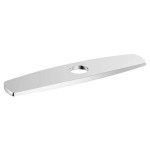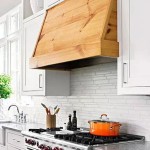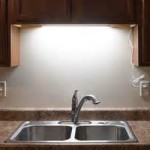Mexican Tile Backsplash Ideas for Kitchen Transformation
Mexican tile, also known as Talavera tile, presents a vibrant and culturally rich option for kitchen backsplashes. Its handcrafted nature, diverse color palette, and intricate patterns can transform a utilitarian space into a visual centerpiece. The following explores various ideas for incorporating Mexican tile into kitchen backsplash designs, considering different styles, patterns, and installation techniques.
The allure of Mexican tile lies in its artisanal quality. Each tile is typically handmade and hand-painted, resulting in slight variations that contribute to its unique character. This organic quality contrasts with the uniformity of mass-produced tiles, adding warmth and personality to a kitchen. The colors often used in Mexican tile are derived from natural pigments, producing earthy tones and vivid hues that evoke the landscape and culture of Mexico. Selecting the right tile for a backsplash requires careful consideration of the kitchen's overall design aesthetic and the desired level of visual impact.
Exploring Different Styles of Mexican Tile Backsplashes
Mexican tile offers a versatile range of styles that can be tailored to complement various kitchen designs. One approach is to utilize a single pattern across the entire backsplash area. This creates a cohesive and visually striking effect, particularly when the chosen pattern is bold and intricate. Geometric patterns, floral motifs, and abstract designs are all common in Mexican tile and can be used to create a focal point above the cooktop or spanning the entire length of the countertop. The selection of a single pattern simplifies the installation process and allows the tile's inherent beauty to take center stage.
Another style involves creating a mosaic effect by combining different patterns and colors of Mexican tile. This approach allows for greater creativity and personalization. Smaller tiles can be arranged in intricate designs, forming a patchwork of colors and textures. This method works particularly well in larger kitchens where the mosaic pattern can be appreciated from a distance. It is important to consider the overall color scheme and ensure that the various tile patterns complement each other harmoniously to avoid a visually chaotic result. Careful planning and layout are essential for achieving a balanced and aesthetically pleasing mosaic backsplash.
For those seeking a more subtle approach, using Mexican tile as accent pieces within a more neutral backsplash can be effective. This involves incorporating small sections of Mexican tile within a field of plain ceramic or porcelain tile. These accent pieces can be strategically placed to highlight specific areas, such as around the range hood or behind the sink. This method provides a touch of Mexican flair without overwhelming the space. The contrast between the vibrant Mexican tile and the neutral background creates a visually interesting dynamic. This option also tends to be more cost-effective, as it requires a smaller quantity of the more expensive Mexican tile.
Considerations for Color and Pattern Selection
The color palette of Mexican tile is a defining characteristic, influencing the overall mood and aesthetic of the kitchen. Earth tones, such as terracotta, ochre, and brown, are commonly found in Mexican tile and create a warm and inviting atmosphere. These colors can be paired with natural materials like wood and stone to enhance the rustic feel. Blue and white tiles, often inspired by traditional Talavera pottery, offer a more classic and elegant look. These colors work well in kitchens with a Mediterranean or coastal theme.
Vibrant colors, such as red, yellow, and green, are also prevalent in Mexican tile and can inject energy and personality into a kitchen. These colors are often used in floral and geometric patterns, creating a bold and eye-catching effect. When using vibrant colors, it is important to consider the existing color scheme of the kitchen and ensure that the tiles complement the cabinets, countertops, and flooring. Overuse of bright colors can be overwhelming, so it is often best to use them sparingly as accent pieces or within a carefully curated pattern.
The choice of pattern is equally important in determining the aesthetic impact of the backsplash. Geometric patterns, such as diamonds, squares, and hexagons, offer a contemporary and structured look. These patterns can be used to create a sense of order and visual interest. Floral motifs, such as sunflowers, roses, and vines, evoke a more traditional and romantic feel. These patterns work well in kitchens with a cottage or farmhouse style. Abstract patterns, which often feature swirling lines and organic shapes, offer a more artistic and unique look. These patterns can be used to create a focal point and add a touch of personality to the kitchen.
Installation Techniques and Maintenance of Mexican Tile
The installation of Mexican tile requires careful attention to detail to ensure a professional and long-lasting result. Because Mexican tile is often handmade, variations in size and thickness are common. This means that a wider grout line may be necessary to accommodate these imperfections and create a level surface. It is recommended to dry-lay the tiles before installation to assess their arrangement and plan for any necessary adjustments. This process ensures a visually appealing and balanced layout.
The substrate, or the surface on which the tiles are installed, must be clean, dry, and level. Any imperfections in the substrate can affect the final appearance of the backsplash. Applying a waterproof membrane prior to tile installation is crucial, particularly in areas that are prone to moisture, such as behind the sink and cooktop. This membrane prevents water from seeping into the wall and causing damage. The choice of mortar is also important; a high-quality thin-set mortar specifically designed for tile installation is recommended.
After the tiles are installed, grouting is essential to fill the spaces between the tiles and create a waterproof seal. The choice of grout color can significantly impact the overall appearance of the backsplash. A contrasting grout color can highlight the individual tiles and their patterns, while a matching grout color creates a more seamless and unified look. Sealing the grout after it has cured is crucial to protect it from stains and moisture. Periodic resealing may be necessary to maintain its integrity.
Maintaining a Mexican tile backsplash involves regular cleaning to remove dirt, grease, and spills. A mild detergent and warm water are generally sufficient for cleaning. Avoid using abrasive cleaners or scouring pads, as these can scratch the surface of the tiles. For stubborn stains, a specialized tile cleaner may be necessary. Regular cleaning and maintenance will help to preserve the beauty and longevity of a Mexican tile backsplash, ensuring that it remains a vibrant and eye-catching feature of the kitchen for years to come.
The selection of grout is a crucial aspect of Mexican tile backsplash installation, influencing both the aesthetics and functionality. Epoxy grout is an excellent choice because of its durability and resistance to stains and water damage. It's particularly well-suited for kitchens where spills are common. However, epoxy grout can be more challenging to work with and may require professional installation. Cementitious grout is a more traditional and cost-effective option, but it requires sealing to prevent staining and water penetration. The grout color should complement the tiles; a darker grout can accentuate the tile pattern, while a lighter grout creates a more uniform appearance.
Lighting plays a pivotal role in showcasing the beauty of a Mexican tile backsplash. Under-cabinet lighting can highlight the texture and colors of the tiles, adding depth and dimension to the space. Recessed lighting can provide ambient illumination, creating a warm and inviting atmosphere. Pendant lights hung above the kitchen island or breakfast bar can serve as both functional lighting and decorative accents, complementing the overall design of the kitchen. The strategic placement of lighting fixtures can enhance the visual impact of the Mexican tile and create a more aesthetically pleasing environment.
Integrating Mexican tile into a kitchen backsplash is not limited to the area directly behind the countertops. Consider extending the tile up to the ceiling to create a dramatic and eye-catching feature wall. This approach works particularly well in kitchens with high ceilings, as it draws the eye upward and creates a sense of spaciousness. Alternatively, the tile can be used to create a border or frame around a window or doorway, adding a touch of Mexican flair to other areas of the kitchen. This can help to tie the design together and create a cohesive look throughout the space.

How To Use Talavera Kitchen Tiles Add Some Flavor Your Remodel

These Mexican Tile Backsplash Ideas Are The Antidote To Snooze Worthy Kitchens

Mexicantiles Com Kitchen Backsplash With Decorative Mural Using Angeles Talavera Mexican Tile

Mexican Tile Kitchen Backsplash Flooring Pyramid Imports

These Mexican Inspired Tile Backsplash Ideas Are The Antidote To Snooze Worthy Kitchens

Mexican Tile Backsplash Ideas Adding Vibrant Flair To Your Kitchen

Simple Talavera Designs Backsplash Small Mexican Tiles

The Mexican Tile Backsplash To Pimp Up Your Homes

Mexican Ceramic Kitchen Backsplash Tiles Ideas Cerames

Combine Talavera Tiles With Copper Appliances Custom Made Products








